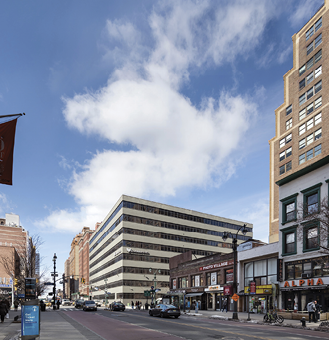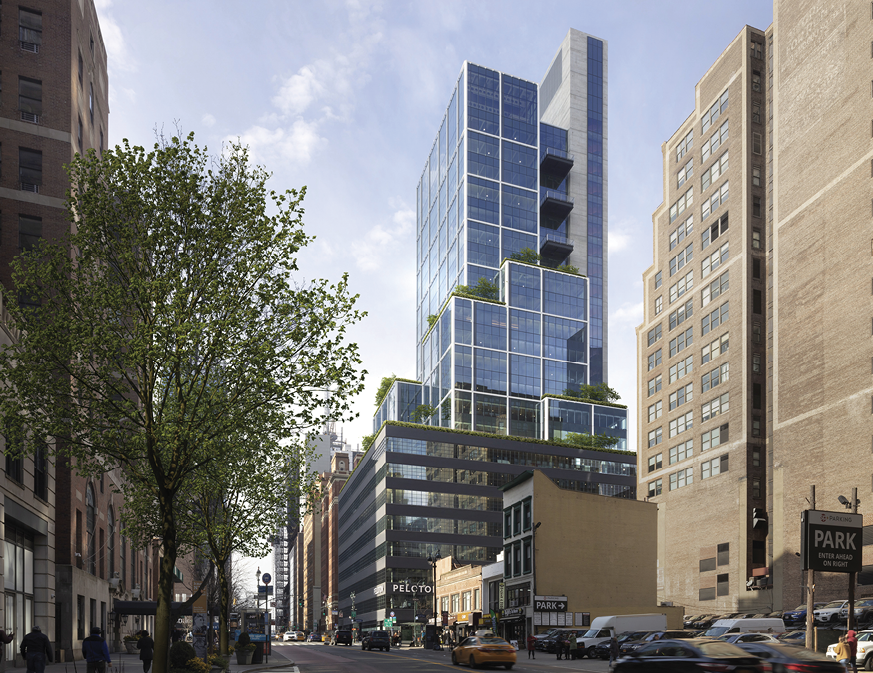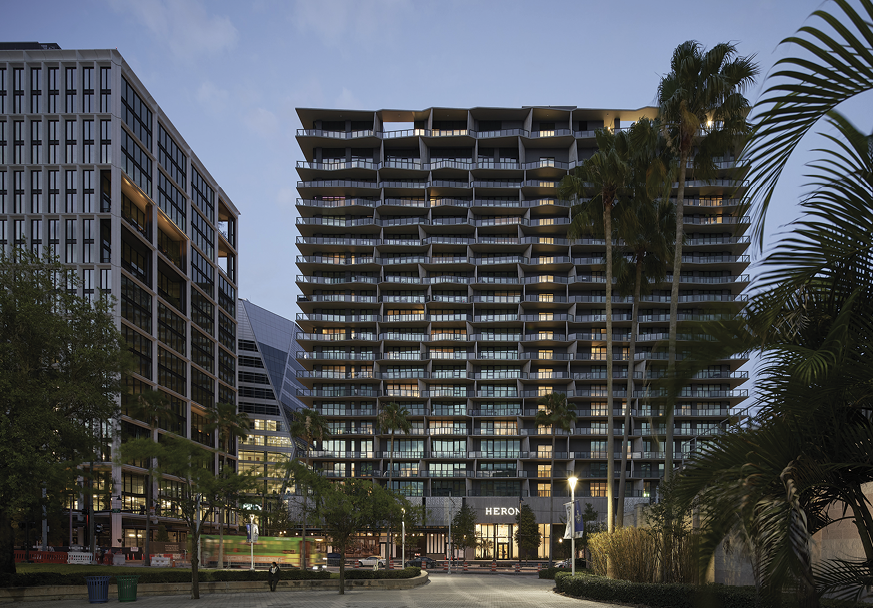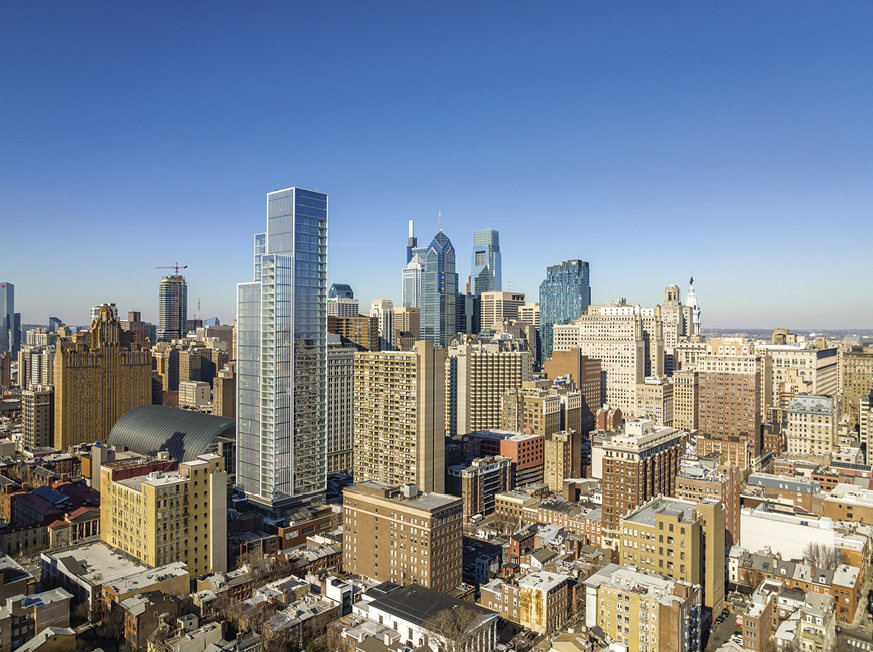- Home
- Media Kit
- MediaJet
- Current Issue
- Past Issues
- Ad Specs-Submission
- Ad Print Settings
- Reprints (PDF)
- Photo Specifications (PDF)
- Contact Us
![]()
ONLINE
![]()
ONLINE

Teamwork and Collaboration
Editors’ Note
On July 4, 1976, A. Eugene Kohn founded Kohn Pedersen Fox Associates (KPF) in New York City, alongside William Pedersen and Sheldon Fox, with a commitment to outstanding design, quality of execution, and exceptional client service. The Founding Partners wanted to create a firm that would succeed well past their own tenures. With this in mind, they sought talented people who could be as good, and ideally better, than themselves. These employees, mentored by the founders, would be the next leaders at KPF – and hold the responsibility of doing the same for following generations. Today, Kohn serves as Chairman and Founder of Kohn Pedersen Fox. Holding bachelor of architecture and master of architecture degrees from the University of Pennsylvania, he served in the U.S. Navy on active duty between his academic degrees and, after graduation, remained in the Reserve for another five years, retiring as a Lieutenant Commander. Kohn is an Executive Fellow of the Graduate School of Design at Harvard University. He has taught at Harvard Business School for more than ten years and at the Harvard Graduate School of Design for four years. He helped establish the Harvard Real Estate Center Academic Initiative, is a founding member of the Wharton School Real Estate Center Advisory Board, and has served for over 30 years on the Board of Overseers at PennDesign. Kohn was a trustee for the University of Pennsylvania and was honored with the 2010 Alumni Award of Merit by the university, the highest award presented to alumni. Kohn has also been recognized with the Wharton Real Estate Center’s Lifetime Achievement Award, the University of Pennsylvania – PennDesign Dean’s Medal of Achievement, the highest honor awarded by the institution, and the Ellis Island Medal of Honor.
Firm Brief
Kohn Pedersen Fox Associates (KPF) is one of the world’s preeminent architecture firms, providing architecture, interior, programming and master planning services for clients that include some of the most forward-thinking developers, corporations, entrepreneurs, and institutions in the United States and around the world. The firm’s extensive portfolio spans more than 40 countries and includes a wide range of projects from office and residential buildings to civic and cultural spaces to educational facilities. Driven by individual design solutions, rather than a predetermined style, KPF’s (kpf.com) mission is to create buildings and places of the utmost quality and contextual sensitivity, providing a valuable impact on the cities they inhabit.

Hudson Commons in New York City
(before - above, and after - below)
What have been the keys to KPF’s industry leadership and how do you define the KPF difference?
When Bill Pedersen, Shelley Fox, and I founded the firm, we set three things as goals: One, to create a great firm. Two, to do outstanding architecture of all types, but primarily commercial, which we felt would enhance and contribute to our city life and the quality of architecture. Three, create a firm that offers strong opportunities for young architects to eventually become principals and leaders of the firm. And that has happened, as today we have 33 principals led by our President, James von Klemperer, who has been with the firm for almost 40 years. A key to this success is teamwork. We always think in terms of “we” and not “I,” when it comes to our projects, highlighting the contributions of the group over the individual. This philosophy brings out the best in people and boosts team morale.

Will you discuss KPF’s global footprint and capabilities?
KPF has a vast global presence, with nine international offices and projects complete or underway around the world. That sustained success can be attributed to firm and project leadership. Coordination among our firm’s leaders is critical, and the group meets regularly in virtual and in-person settings to discuss project pursuits, firm operations, and overall strategy. Project leaders and their teams are also in constant contact, through regularly scheduled meetings and impromptu conversations. This continuous sharing of ideas and process is what allows us to create the best possible results for our clients, and create a strong workplace for our staff.
What has made KPF so strong at building longstanding client relationships and client loyalty?
First and foremost, it is the quality of our work - the buildings and designs we deliver - that maintains our loyal client base. Beyond that, it is the way we work with our clients, engaging them in the process and making them feel heard and understood, that also brings them back to us. We call our process the “comparative method,” where we look at a series of different possibilities, not with the intention of introducing a long menu and asking the client which one do you want, but with the idea to be able to compare one design against the other so that one can logically explain why one design seems to work for a particular client. And when our clients have issues or problems, we find a way of solving them. This is the DNA of the firm. We find that allowing the client to participate in the process makes them really a part of it and excited by it.

Heron in Tampa, Florida
Will you highlight some of KPF’s recent projects?
In New York City, One Vanderbilt, our new transit-connected office tower next to Grand Central for SL Green, continues to be recognized for excellence. This month, the project will be honored as the Regional Plan Association’s “Project of the Year” at their Centennial Gala. The RPA commends the tower’s presence on the Manhattan skyline, and its impact as signaling “the beginning of the recovery of New York City from the COVID pandemic” upon its opening in the Fall of 2020. The organization noted that, “Occupying an iconic location next door to Grand Central Terminal, planners and architects created new public spaces on Vanderbilt Avenue and designed a building that respects and enhances the historic terminal, truly enriching the public realm. One Vanderbilt is more than a once-in-a-generation transformation of Midtown Manhattan, but also the herald of what is to come.”
Hudson Commons, another New York City project, is a finalist in the Urban Land Institute of New York’s Award for Excellence in Development in the Office Development category. Hudson Commons was built in 1962 originally to function as a warehouse. KPF’s recent transformation of the building includes the renovation of the existing eight-story building and the addition of a 17-story glass-and-steel overbuild. Last year, Hudson Commons sold for over $1 billion, more than tripling the price of the building before its renovation four years prior.
And across the country, our work continues. In Philadelphia, we just completed a major new residential tower on the Avenue of the Arts. The building is prominent on the skyline, marking the district from afar, and contributes to the street level with a generous urban base. It is located across from the Kimmel Center, and offers spectacular views of the city. In Tampa, our project Heron, another residential building, has been incredibly successful. It is nearly fully leased and asking some of the highest rents in the neighborhood.

Arthaus in Philadelphia
KPF has placed a major focus on sustainability. What has made this so important for the firm and will you provide an overview of KPF’s sustainability initiatives?
Climate change is the single biggest issue we are facing as a global society, so, as a global practice, we consider it our duty to design lasting architectural solutions that mitigate their lifecycle impact on environmental resources and that protect and enhance the well-being of the communities they serve. We believe it is imperative to design and advocate for resilient architectural solutions that minimize both operational and embodied GHG emissions, and which push the boundaries of their cultural, economic, and political context. For that reason, we have joined AIA, RIBA, and many of our peers in a joint effort to develop the capabilities to design and deliver carbon neutral buildings by 2030, which can embody the goals we need to achieve as a society.
This mission extends beyond our project work to our own campus and community as we endeavor to achieve operational carbon neutrality by minimizing our energy, water, and waste impact and investing in the World Wildlife Fund’s Climate Crowd and Alliances for Climate Action programs. KPF is the first architecture firm in the U.S. to have an office WELL Health-Safety certified. This institutional effort is paired with developing the environmental expertise of our staff through education, knowledge exchange, and awareness programs. Our objective is to serve, through both design and practice, as responsible stewards of our planet.
How is technology impacting the way KPF operates?
Technology is an integral part of the firm’s day-to-day operations and allows us to function efficiently as a global practice. It also enhances the work itself and advances our goals for a project.
KPF’s commitment to climate action drives in-house innovation, through both project application and increasing design workflow efficiency. In the context of global warming and extreme weather as well as the COVID-19 pandemic, KPF’s work crafting resilient and comfortable urban spaces that limit their environmental impact is more relevant than ever. Our designers rely on KPF’s modeling and analysis capabilities to understand the effects of air movement, temperature, and humidity on the microclimate around their projects.
How important is it for KPF to build a diverse and inclusive workforce to bring diverse perspectives and experiences to the table when addressing client needs?
Our workforce is extremely diverse, with many people from numerous countries across Europe, Asia, South America and the Middle East. We understand that in order to provide the best architectural solutions, our designers must be reflective of the populations they serve, and so we recruit and retain staff to that effect. Our firm is also fairly balanced between the number of men and women, but we know we still have work to do to ensure more women leaders represent KPF at the senior levels. Though men have traditionally dominated this profession, we are seeing a broader shift toward balance in architectural education as well. When I was a student, there were two women in my five-year class at University of Pennsylvania. Today, over half the program is made up of women. So, while the workforce in the profession today reflects the demographics in education many years ago, the future is currently reflected in today’s student body. I think this will continue so that in the future women will dominate the profession, and our firm continues to strive to enhance its diversity.
What do you see as KPF’s responsibility to the communities it serves?
Buildings – both new and renovated – have a lasting impact on their communities, often standing for many decades. So, the design itself must work not only for the intended purpose of the current user, but must also contribute to the surrounding context. KPF is committed to creating places loved by users and neighbors alike. We take that responsibility seriously, engaging local community members from the earliest stages of the design process, sharing our ideas and spending time to build trust and to better understand their needs. At NYCHA Red Hook Houses in Brooklyn, for example, we held numerous workshops with residents, elected leaders, parents, and even children, in order to craft a design for the public spaces that was both resilient and usable. Our plan improves building entries and site lighting, creates pedestrian spaces, courtyards, and playgrounds, and aids in wayfinding across this large expanse of repetitive, circa 1930s structures.
KPF is headquartered in New York. What do you see as New York’s advantages in attracting talent and growing a business?
New York is KPF’s home. We’ve always had our headquarters here, and have done significant, city-shaping projects in New York. The city will always be attractive to talented, driven people – whether just starting out in their careers, or moving from elsewhere to pursue a new opportunity. And for those just beginning their career pursuits, there are great universities here, with excellent architecture programs that produce highly capable designers. There is an endless amount of culture one can experience in New York to feed one’s interests within and outside of the field. Recruiting and retaining the best talent is the most important part of growing a successful business, and New York remains highly attractive.
What do you feel are the keys to building a career as an architect?
Foundational to a successful career is a good education, so I recommend going to the best possible architecture school to learn about the practice and profession. From there, a young architect should seek out a position at a strong firm, small or large, to learn about the different phases of work – designing, creating working drawings, and all of the aspects of a professional practice. Working at a firm can give one a different kind of education in terms of process, so I recommend getting as involved as possible in all types of projects and learning what it means to work on a team in a professional setting.![]()